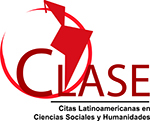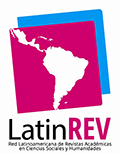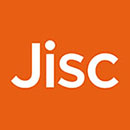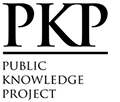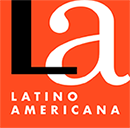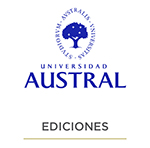Modern Plant Breeding, Artificial Intelligence, and Intellectual Property Rights
Abstract
The modern plant breeding to obtain new plant varieties is based on genomic and phenomic selection generated through big data with millions of information points. In the face of such a quantity of data, it is necessary to use artificial intelligence to combine a complete vision and analysis of the problem through a human-computer interaction never addressed.
The use of artificial intelligence has already created interpretive challenges in patents and copyrights. To a greater extent, modern plant breeding with the assistance of artificial intelligence is exposing major disarticulations and anachronisms in the Plant Breeder's Rights and patent systems for biotechnological inventions. The challenges may even extend to the question of who would be entitled to the right in the case of products obtained without human intervention.
The analysis of the situation indicates, on the one hand, that it would be necessary a review of the international framework of intellectual property rights in plant living matter which is based on independent treaties and conventions that apply to an indivisible organism as is a new plant variety. A more logical proposal would be to have a single, modern, and up-to-date comprehensive sui generis protection system for all types of plant germplasm. On the other hand, it is proposed that, even in the case of products obtained through complete artificial intelligence processes, there must always be a human person legally responsible of the consequences of their actions, whether positive or negative.
Downloads
References
Breseghello, F. y Guedes Coelho, A. S. (2013). Traditional and Modern Plant Breeding Methods with Examples in Rice (Oryza sativa L.). Journal of Agricultural and Food Chemistry, 61(35), 8277-8286. https://doi.org/10.1021/jf305531j.
Butler, L. (1 de agosto de 2019). World first patent applications filed for inventions generated solely by artificial intelligence. Press Release, University of Surrey. https://www.surrey.ac.uk/news/world-first-patent-applications-filed-inventions-generated-solely-artificial-intelligence.
Chavali, P. (2020). How Math and Data Science Accelerate Innovation While Conserving Resources. https://www.cropscience.bayer.com/innovations/data-science/a/how-math-and-data-science-accelerate-innovation-while-conserving.
Crain J., Mondal S., Rutkoski J., Singh R. P. y Poland J. (2018). Combining high-throughput phenotyping and genomic information to increase prediction and selection accuracy in wheat breeding. Plant Genome, 11(1). https://doi.org/10.3835/plantgenome2017.05.0043.
Dolinski, K. y Troyanskaya, O. G. (2015). Implications of Big Data for cell biology. Molecular Biology of the Cell, 26(14), 2575-2578.
Donnenwirth, J. (23 de agosto de 2018). Does the UPOV System Foster Modern Innovation? Seed World. https://seedworld.com/upov-system-foster-modern-innovation/.
Foote, N. (2019). EU study to clarify gene editing court ruling further muddies waters. EURACTIV.com. https://www.euractiv.com/section/agriculture-food/news/eu-study-to-clarify-gene-editing-court-ruling-further-muddies-waters/.
Funk, J. (24 de febrero de 2020). Plant Breeding: Art or Science? Seed World. https://seedworld.com/plant-breeding-art-or-science/.
Gibson, D. G., Glass, J. I., Lartigue, C., Noskov, V. N., Chuang, R. Y., Algire, M. A., Benders, G. A., Montague, M. G., Ma, L., Moodie, M. M., Merryman, C., Vashee, S., Krishnakumar, R., Assad-Garcia, N., Andrews-Pfannkoch, C., Denisova, E. A., Young, L., Qing Qi, Z., Segall-Shapiro, T. H., Calvey, C. H., Parmar, P. P., Hutchison, C. A., Smith, H. O. y Venter, J. C. (2010). Creation of a Bacterial Cell Controlled by a Chemically Synthesized Genome. Science, 329(5987), 52-56.
Gil, Y., Greaves, M., Hendler, J. y Hirsh, H. (2014). Amplify scientific discovery with artificial intelligence: Many human activities are a bottleneck in progress. Science, 346(6206), 171-172.
González-Camacho, J. M., Ornella, L., Pérez-Rodríguez, P., Gianola, D., Dreisigacker, S y Crossa, J. (2018). Applications of Machine Learning Methods to Genomic Selection in Breeding Wheat for Rust Resistance. Plant Genome, 11(2), 1-15.
Guadamuz, A. (octubre de 2017). Artificial intelligence and copyright. WIPO Magazine. https://www.wipo.int/wipo_magazine/en/2017/05/article_0003.html.
Hancock, J. M. (2014). Introduction to phenomics. En Hancock, J. M., (Ed.), Phenomics (pp. 1-7). Florida: CRC Press.
Harfouche, A. L, Jacobson, D. A., Kainer, D., Romero, J. C. Harfouche, A. H., Mugnozza, G. S., Moshelion, M., Tuskan, G. A., Keurentjes, J. J. B. y Altman, A. (2019). Accelerating Climate Resilient Plant Breeding by Applying Next-Generation Artificial Intelligence. Trends in Biotechnology, 37(11), 1217-1235.
Harken, R. (2019). Artificial Intelligence for Plant Breeding in an ever-changing climate. Oak Ridge Leadership Computing Facility. https://www.olcf.ornl.gov/2019 /11/13/ai-for-plant-breeding-in-an-ever-changing-climate/.
Herrero, M. et al. (2020). Innovation can accelerate the transition towards a sustainable food system. Nat Food, (1), 266-272. https://doi.org/10.1038/s43016-020-0074-1.
Hou, Y. (2019). Protecting New Plant Varieties in China and Its Major Problems. En Liu, K. C., Racherla, U. (Eds.), Innovation, Economic Development, and Intellectual Property in India and China. Singapur: Springer. https://doi.org/10.1007/978-981-13-8102-7_14.
ISAAA. (2019). Omics Sciences: Genomics, Proteomics, and Metabolomics. Pocket K No. 15. https://www.isaaa.org/resources/publications/pocketk/15/default.asp.
Lazcano, R. (6 de enero de 2020). Diferencia entre inteligencia artificial, machine learning y deep learning. Enzyme Advising Group. https://blog.enzymeadvisinggroup.com/inteligencia-artificial-machine-learning.
Lawson, C. (2015). The breeder’s exemption under UPOV 1991, the Convention on Biological Diversity and its Nagoya Protocol. Journal of Intellectual Property Law & Practice, 10(7), 526-535. https://doi.org/10.1093/jiplp/jpv080.
Marr, B. (16 de noviembre de 2018). The Wonderful Ways Artificial Intelligence Is Transforming Genomics and Gene Editing. Forbes. https://www.forbes.com/sites/bernardmarr/2018/11/16/the-amazing-ways-artificial-intelligence-is-transforming-genomics-and-gene-editing/?sh=f1f542e42c11.
NCBI. (2020). Commonly Used Genome Terms. National Center for Biotechnology Information. US National Library of Medicine. https://www.ncbi.nlm.nih.gov/projects/genome/glossary.shtml.
NCC. (noviembre de 2019). Glossary of Terms. Centers for Disease Control and Prevention. Office of Science (OS). Office of Genomics and Precision Public Health. https://www.cdc.gov/csels/dsepd/ss1978/glossary.html.
Rapela, M. A. (2000). Derechos de propiedad intelectual en vegetales superiores. Buenos Aires: Editorial Ciudad Argentina.
Rapela, M. A. (2014). Post Transgenesis: new plant breeding techniques. Seed News, XVIII(1), 14-15.
Rapela, M. A. (2016). Ley 20.247 de Semillas y Creaciones Fitogenéticas: las razones para su actualización y los proyectos bajo análisis en Argentina. Revista Interdisciplinaria de Estudios Agrarios, (45), 69-98.
Rapela, M. A. (2018a). Metodología de CRISPR, aspectos legales y regulatorios. Actas XI Congreso Nacional de Maíz, Mesa de Genética y Mejoramiento Genético Vegetal (pp. 266-270).
Rapela, M. A. (2018b). Edición Génica mediante sistemas CRISPR/Cas. AGROPOST CPIA, (155), 11-13.
Rapela, M. A. (2018c). Gene editing and CRISPR-Cas. Seed News Magazine, XXII, 12-16.
Rapela, M. A. (2019a). Ley 20.247 de Semillas y Creaciones Fitogenéticas – Análisis de los proyectos de reforma y del dictamen de las comisiones. Anales de Legislación Argentina, LXXIX(7), 3-93.
Rapela, M. A, (2019b). The European Court of Justice ruling on products derived from genome editing: a case for Brazil and Argentina? Seed News Magazine, XVIII(1), 6-8.
Rapela, M. A. (2019c). Post Malthusian dilemmas in Agriculture 4.0. En Rapela, M. A., Fostering innovation for Agriculture 4.0 – A comprehensive Plant Germplasm System (pp. 1-16). Suiza: Springer Nature.
Rapela, M. A. (2019d). The regulatory tangle. En Rapela, M. A., Fostering innovation for Agriculture - A comprehensive Plant Germplasm System 4.0 (pp. 17-52). Suiza: Springer Nature.
Rapela, M. A. (2019e). Plant Germplasm Integrated System. En Rapela, M. A., Fostering innovation for Agriculture 4.0 - A comprehensive Plant Germplasm System (pp. 71-105). Suiza: Springer Nature.
Rapela, M.A. (2019f). Soberanía tecnológica y propiedad intelectual en el marco de los proyectos de reforma de la ley 20.247 de semillas y creaciones fitogenéticas. Revista Jurídica de Agronegocios, (8), IJ-DCCLII-920.
Rapela, M. A. y Levitus, G. (2014). Novas técnicas do melhoramento. Anuario da ABRASEM, Associação Brasileira de Sementes e Mudas (pp. 29-32).
Rapela, M. A. y Witthaus, M. (2006). Vacíos de protección en la legislación argentina sobre derechos del obtentor y de patentes. En Rapela, M. A., (Dir.), Innovación y Propiedad Intelectual en Mejoramiento Vegetal y Biotecnología Agrícola (pp. 269-291). Buenos Aires: Heliasta.
Schlackman, S. (22 de abril de 2018). Who holds the Copyright in AI Created Art. Artrepreneur Art Law Journal. https://alj.artrepreneur.com/the-next-rembrandt-who-holds-the-copyright-in-computer-generated-art/.
Thaler, S. L. (18 de noviembre de 2008). US Patent 7,454,388, Device for the autonomous bootstrapping of useful information. Washington: DC US Patent and Trademark Office.
Voss-Fels, K. P., Cooper, M. y Hayes, B. J. (2019). Accelerating crop genetic gains with genomic selection. Theoretical and Applied Genetics, 132(3), 669-686.
UPOV. (1991). Convenio Internacional para la Protección de las Obtenciones Vegetales. https://www.upov.int/edocs/pubdocs/es/upov_pub_221.pdf.
UPOV. (2004). Molecular Techniques. International Union for the Protection of New Varieties of Plants (UPOV) Administrative and Legal Committee. Fiftieth Session Geneva, 18-19 de octubre. Document prepared by the Office of the Union.
Wang, H., Cimen, E., Singh, N. y Buckler, E. (2020). Deep learning for plant genomics and crop improvement. Current Opinion in Plant Biology, (54), 34-41.
WIPO. (13 de diciembre de 2019). Conversation on Intellectual Property (IP) and Artificial Intelligence. (AI). https://www.wipo.int/edocs/mdocs/mdocs/en/wipo_ip_ai_2_ge_20/wipo_ip_ai_2_ge_20_1.pdf.
WIPO. (2020). Patent Expert Issues: Biotechnology. https://www.wipo.int/patents/en/topics/biotechnology.html.
Zavia, M. S. (4 de agosto de 2016). Una inteligencia artificial pinta un nuevo cuadro de Rembrandt tras estudiar toda su obra”. GIZMODO. https://es.gizmodo.com/una-inteligencia-artificial-pinta-un-nuevo-cuadro-de-re-1769869684.
Copyright (c) 2020 Miguel A. Rapela

This work is licensed under a Creative Commons Attribution-NonCommercial-NoDerivatives 4.0 International License.
This license allows the copy, distribution, exhibition and representation of the work provided authorship is acknowledged and the work is properly quoted. Commercial use of the original work or the generation of derived works are not allowed.
The authors hereby guarantee the right to the first publication of the work to the Revista Jurídica Austral.











